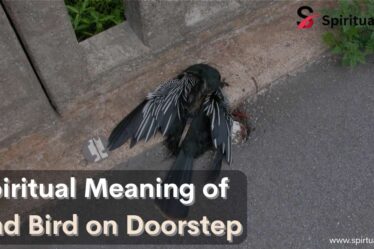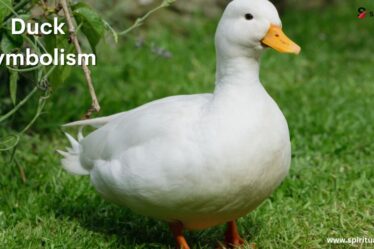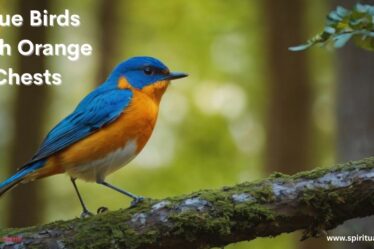
Texas is home to a wide variety of birds, but few are as noticeable as the geese of Texas. These birds are found across the state, from quiet wetlands to busy city parks. Some are year-round residents, while others visit during migration. The geese of Texas include both native and unfamiliar species, each with its own look and behavior.
You’ll often see them flying in V-shaped groups, feeding in open fields, or swimming in ponds. Their calls fill the air in fall and winter. Whether you’re a bird lover or just curious, learning about the geese of Texas is a fun and rewarding experience.
7 Geese in Texas
The geese in Texas come in a variety of colors, sizes, and temperaments. Some are bold and loud, flying in sharp V-shaped formations across the sky. Others are quiet and elusive, hiding among the tall reeds in marshy corners of the state. These seven species are either common breeders, seasonal migrants, or rare but regular visitors who add richness to Texas’s birding life.
From the large and familiar Canada Goose to the rare and compact Ross’s Goose, each bird offers a different story. Whether you’re walking near a pond in a city park or scanning distant fields with binoculars, you’re bound to find one of these seven honking, grazing, flying wonders. Their presence marks seasonal change, migration journeys, and the ongoing relationship between bird and landscape.
1. Canada Goose
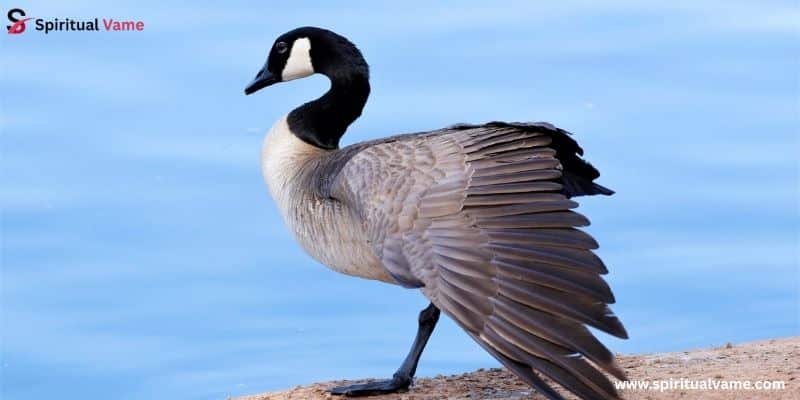
The Canada Goose (Branta canadensis) is probably the most recognized goose in North America. With a black head, long neck, and white cheek patch, this large waterfowl has made a name for itself across urban and wild settings. It typically weighs between 7–14 lbs (3–6.4 kg), with a wingspan of 50–71 inches (127–180 cm) and a body length of 30–43 inches (76–110 cm). These birds often appear in flocks flying in V-shaped formations, their echoing honking calls filling the sky.
Canada Geese are herbivores that enjoy grazing on grasses, aquatic plants, and leftover grains from farmland. You’ll spot them around ponds, lakes, golf courses, and even parking lots. Their nesting behavior is also worth noting—they build bulky nests lined with down feathers and fiercely guard their goslings in spring. Listed as Least Concern, their populations have bounced back from previous overhunting thanks to conservation regulations and better habitat management.
2. Egyptian Goose
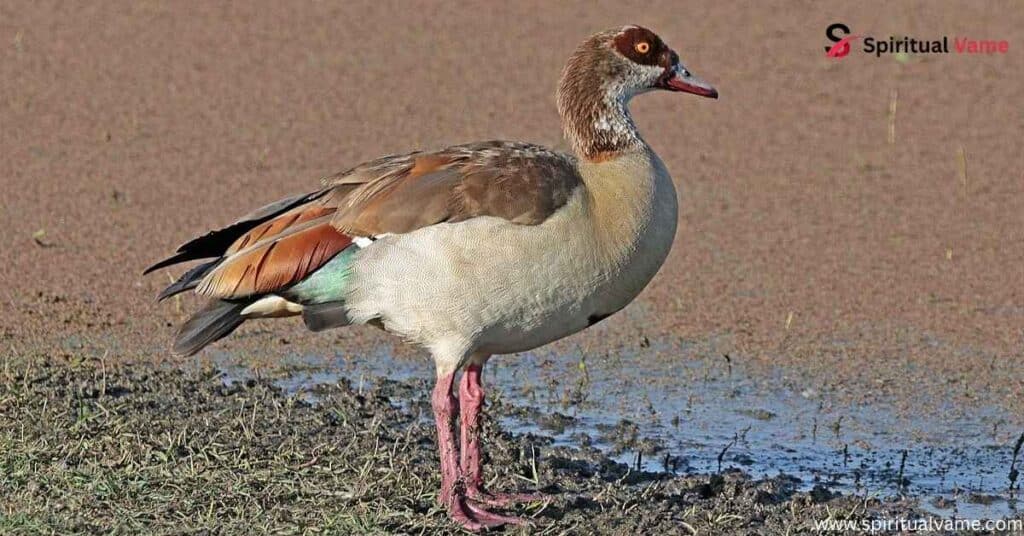
Though not native, the Egyptian Goose (Alopochen aegyptiaca) has established small breeding populations in Texas. Originally from Africa, Europe, and parts of the Middle East, this bird is often seen near lawns, urban ponds, and aquatic areas where food scraps are common. It has a chestnut-brown body, white face, and distinctive eye markings that give it a striking look. With a wingspan of 47–67 inches (120–170 cm) and weighing between 3.5–6.6 lbs (1.6–3 kg), it adds a bit of unfamiliar charm to Texas’s avian community.
These birds don’t migrate like others on this list. They are often non-native residents that have escaped captivity or been released intentionally. Despite their rarity, they have adapted well, creating a small ecological niche where they coexist with native species. Their breeding is limited, but when they do nest, it’s usually near reeds or tucked away in quiet spots. Their story reflects how adaptable wildlife can be in unfamiliar environments.
3. Snow Goose
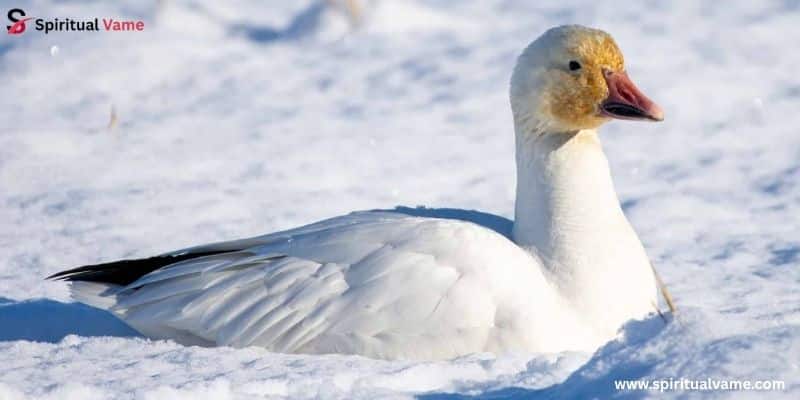
The Snow Goose (Anser caerulescens) is famous for its white plumage, bright blue eyes, and loud, chatty flocks. Some come in a darker blue morph, adding visual variety to the flocks seen gliding across Texas skies in winter. Measuring 25–32 inches (64–81 cm) in length and weighing around 3.2–6.5 lbs (1.5–3 kg), they boast a wingspan of 53–63 inches (135–160 cm). These birds breed in the Arctic tundra, where they nest in shallow depressions lined with plant down.
During migration, they stop over in rice fields, wetlands, and other open areas, often feeding in what can only be called blizzards of birds. Their diet consists mainly of grains and vegetation, and they can strip a field clean during a feeding frenzy. Though listed as Least Concern, unregulated hunting and habitat changes have sparked new management strategies to balance their booming populations with available resources.
4. Greater White-fronted Goose
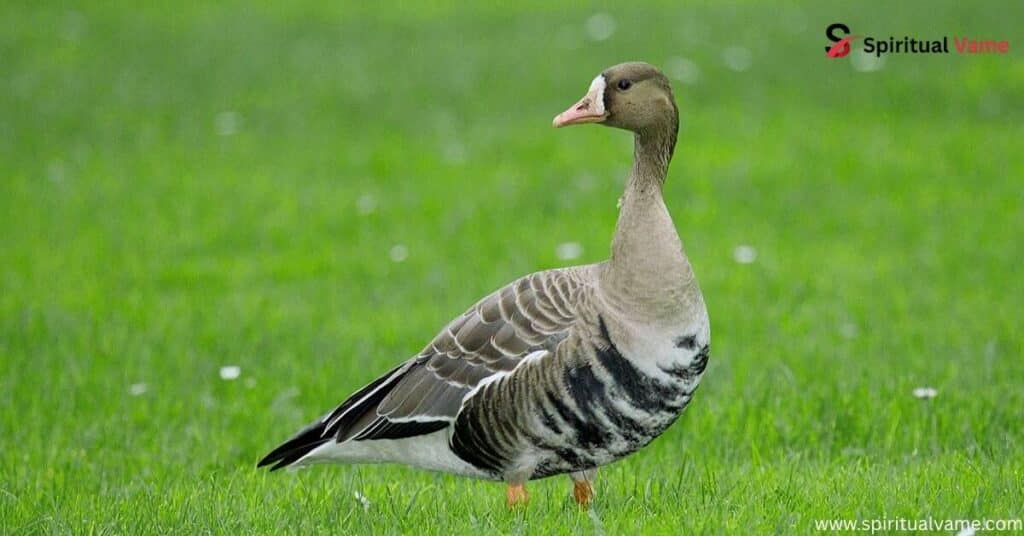
Known affectionately as the “speckle-belly,” the Greater White-fronted Goose (Anser albifrons) stands out thanks to its white-patch face, gray-brown body, and orange legs. It ranges between 20–30 inches (51–76 cm) long, with a wingspan of 43–59 inches (110–150 cm), and weighs about 2.7–6.6 lbs (1.2–3 kg). These geese are regular migrants in Texas, arriving from Arctic breeding grounds and staying through the winter months.
They prefer coastal marshes, agricultural fields, and wetlands, often gathering in cooperative flocks. Their yelping calls are distinct and often heard before they’re seen. The species plays an essential role in ecosystem stability, and their steady numbers reflect the success of international regulations aimed at preserving wetland habitats across their range from North America to Eurasia.
5. Ross’s Goose
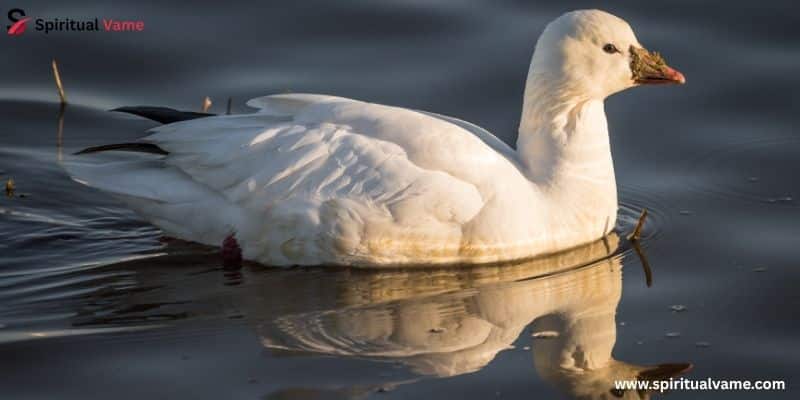
Smaller and less common than its cousin, the Snow Goose, the Ross’s Goose (Anser rossii) is a compact white bird with a stubby bill and short neck. It typically weighs 2.2–3.6 lbs (1–1.6 kg), measures 20–25 inches (51–64 cm) in length, and has a wingspan of 37–43 inches (94–110 cm). It breeds in Arctic regions and winters in parts of central and western Texas.
Ross’s Geese form synchronized flocks, often grazing on grasses, sedges, and aquatic plants. Their grazing habits help maintain healthy wetland vegetation, making them valuable to the ecosystem. Although they’re considered Least Concern, their presence in Texas is more limited, adding excitement for birders lucky enough to spot them during migration.
6. Brant Goose
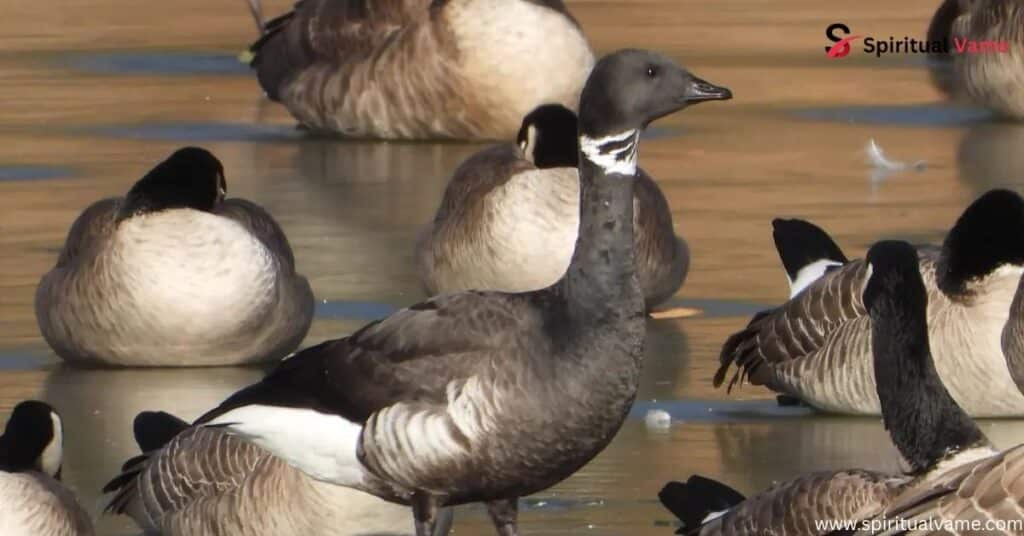
The Brant Goose (Branta bernicla) is a rare but fascinating winter visitor in Texas. With dark plumage, a black head, and a small white neckband, the bird has a wingspan of 40–45 inches (102–114 cm) and weighs around 2.2–4.6 lbs (1–2.1 kg). Unlike most other geese, they favor coastal areas where they feed on aquatic plants.
These geese breed in Arctic regions and build nests from plants and feathers in remote, harsh environments. Their Texas sightings are infrequent but memorable, mostly around wintering grounds along the Gulf Coast. Conservation efforts are crucial to protect their sensitive breeding sites and migration routes.
7. Cackling Goose
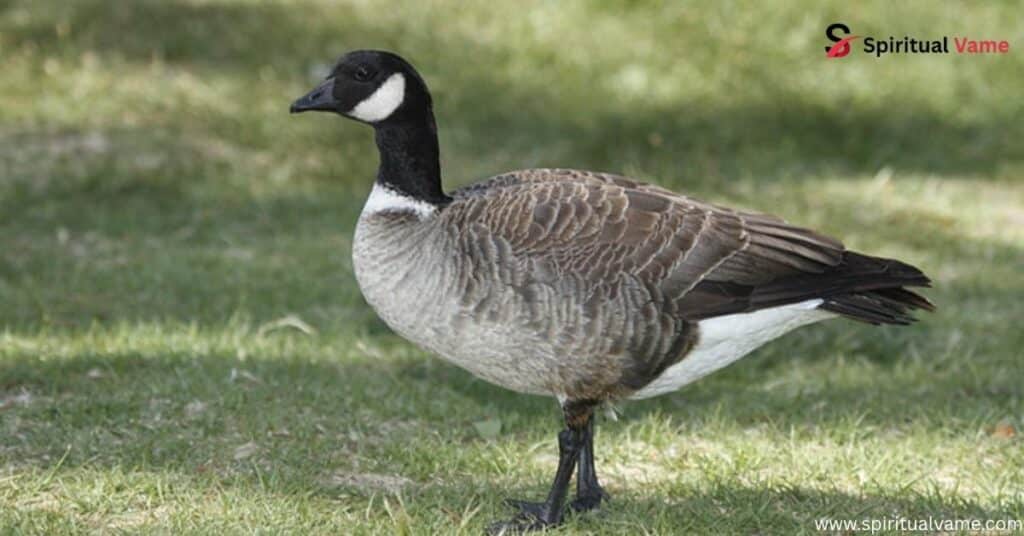
Closely resembling the Canada Goose, the Cackling Goose is much smaller, with a stubbier neck and a triangular bill. These birds are often confused with Mallards in size, but their calls are distinctly higher-pitched. Native to Central America and the U.S., they migrate south during winter and are known for their tight flocks and love of open fields.
Their diet includes plants, grasses, seeds, and berries, and they’re usually seen in mixed flocks alongside other waterfowl. Despite being overlooked due to their resemblance to larger species, they play a vital role in maintaining field vegetation during the cooler months.
Where to Find Geese in Texas
Texas offers many excellent spots for watching geese during winter and migration seasons. The Aransas and Anahuac National Wildlife Refuges along the Gulf Coast are known for their wide wetlands and abundant bird life. You can also explore inland areas like Eagle Lake and El Campo, especially when rice fields are flooded—perfect feeding zones for flocks of Canada, Snow, and Greater White-fronted Geese.
Bring your binoculars, a sense of patience, and respect for landowners and local conservation rules. Observing geese in the wild isn’t just about spotting birds—it’s about forming a deeper connection with the land, celebrating nature’s patterns, and enjoying the peaceful rhythm of seasonal migration.
Barnacle Goose (Rare)
The Barnacle Goose is an exciting but rare visitor to Texas. With its striking black-and-white appearance and small size, it sometimes shows up during migration, possibly blown off course or traveling with other flocks. While its presence is brief and unpredictable, spotting one is a real treat for dedicated birders and wildlife photographers.
Domestic Geese (4 Species)
Besides wild species, Texas also has a number of domestic geese that have either escaped captivity or been intentionally introduced. These birds live in urban parks, farms, and private ponds. Though not migratory, they still offer interesting sights and interactions, especially where people feed them or maintain them as ornamental pets.
Greylag Goose (Domestic)
The Greylag Goose is the ancestor of most domestic breeds. With a thick neck, orange bill, and calm demeanor, it’s easy to spot in parks and zoo ponds. While not wild, they provide an important link to human-animal relationships and farming traditions.
Egyptian Goose (Domestic)
Just like their wild relatives, domesticated Egyptian Geese still show off their bold eye patches and chestnut markings. They live mostly in city areas, grazing on short grasses and loafing around ponds where people often stop to watch or feed them.
Swan Goose (Domestic)
This species looks like a mix of a goose and a swan, hence the name. Found mainly on rural farm ponds, their long neck and large frame make them stand out. These geese are less aggressive and more ornamental than most wild species.
Bar-headed Goose (Domestic)
Known for flying over the Himalayas, the Bar-headed Goose is rare in the U.S. but sometimes appears in aviaries or private collections. Its pale head with dark bars gives it a unique look, and its history adds global interest to local birdwatching.
Conclusion
From familiar honks to rare appearances, the geese of Texas represent much more than seasonal migration. They are reminders of nature’s rhythm, the importance of habitats, and the enduring bond between people and the wildlife that surrounds them. Whether you’re catching the distant V of a Canada Goose or spotting a flock of Snow Geese in a flooded field, each moment offers a deeper connection to the land, the season, and the stories these birds carry across the skies.

